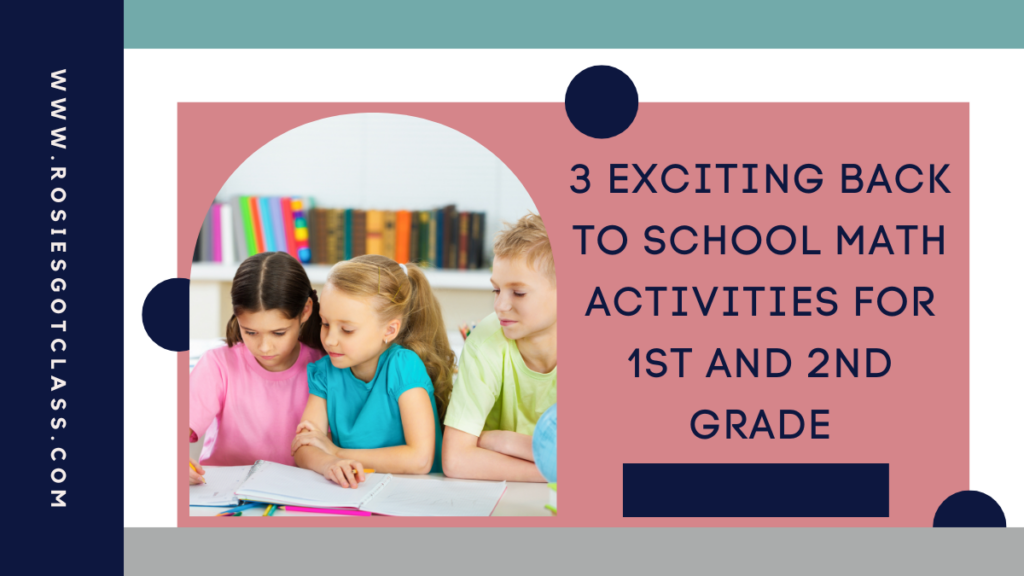
Back to school math activities are exciting and fun! They can be used to welcome your students into your classroom while they build your classroom community. These math activities help everyone learn more about each other. As a teacher they also help you get to know more about your students and see their individual needs. Here are three engaging back to school math activities that are designed to ease students into the new year, build a sense of community, and get excited about math.
At the beginning of the school year, teachers spend much of their time getting to know their students. You do this so you can best meet the needs of your students. One way to get to know your students is to see how they write their numbers. You can see if they write their numbers correctly, see if they reverse any numbers, and understand their number sense. This FREE sample of Neat Number Club will help you do all of these things! Your students will love it because it is a fun challenge to write their numbers. You will love it because you learn so much about your class. You simply print out the pages that you need, and you will be prepared to have your students write their numbers. Type your name and email in the boxes below and Neat Number Club will be in your email!
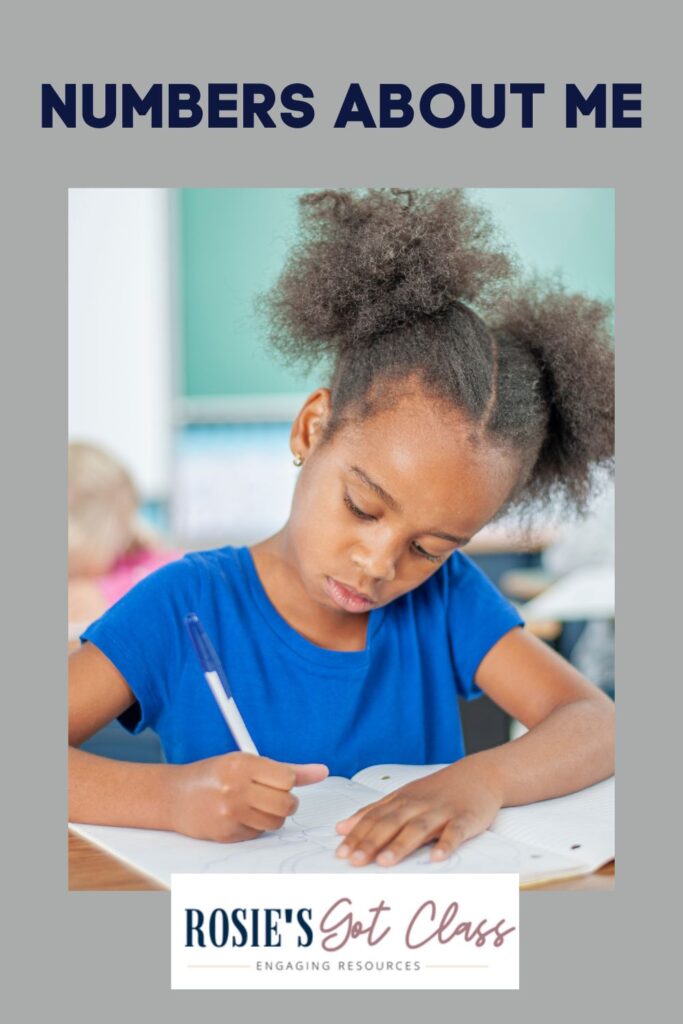
Numbers About Me
“Numbers About Me” is a fun back to school math activity that helps students get to know each other while sharing information that uses numbers. Each student fills out a worksheet with personal numerical information, answering questions such as:
- How many letters are in your name?
- How many people are in your family?
- How many pets do you have?
- What is your age?
- What is your favorite number?
- I can count to __.
How To Do It
- Start by explaining the activity to the students. Provide them with a flag that can be made into a class banner that contains the questions listed above. Explain that they will be filling out the answers using numbers.
- Give the students time to think and write down their answers. After they have filled out the information, they need to draw a self-portrait in the oval. The flags can be made into a banner later with a piece of long string.
- Once all students have completed their flags, gather the class to share the information they have written. Each student can present their “Numbers About Me” to the class. This not only helps them practice public speaking, but they might also find another student who has some of the same numbers.
- Collect the flags and create a colorful display on a bulletin board or somewhere in your classroom. This banner helps your students learn more about their classmates and is a fun way to show the information that is shared. The banner helps build a sense of community and connect your new students together.
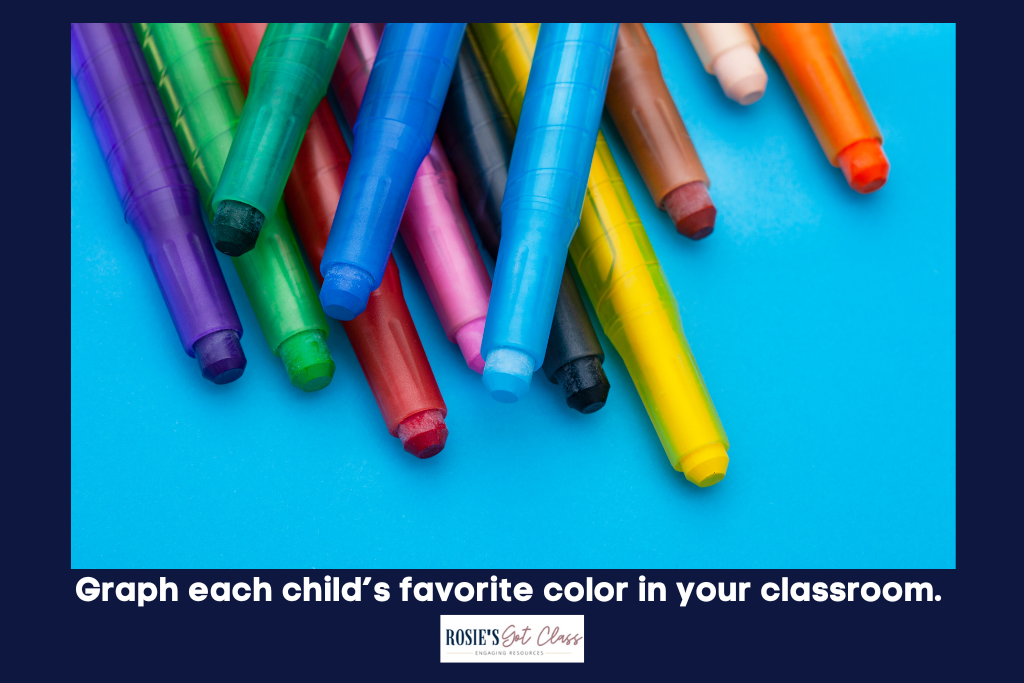
Graphing Fun
One back to school math activity that is easy to try is graphing. It is engaging because it is a real-world activity. Students have ownership in the process and can see the information they have shared in comparison to other students. Graphs also allow for amazing conversation as students begin noticing that this column has more or this column has less.
How To Do It
- Choose a graph topic. I like to choose the topic at the beginning of the year so that I can be prepared for this activity.
Here are three ideas that are easy to use at the beginning of the school year:
- How they got to school (bus, walk, or car)
- Birthdays
- Favorite color
- Decide how you are going to collect the data. I usually give students a small picture that represents their answer. For example, I give them a picture of a bus, a child walking, or a car. I give them a strip of paper with the month of their birth written on it. I have also given them a small piece of paper that represents their favorite color.
- Create the graph. When we are working on this back to school math activity, I use my whiteboard to create the graph. I have also used a pocket chart. We list the categories at the bottom of the graph, and then we use the pictures to add in the data. We also write a title for our graph.
- Discuss the graph. The students quickly begin noticing information that the graph is showing. I begin asking questions about the graph to help them interpret the data. For example, “Which is the most common way students in our class get to school?” or “How many more students prefer blue over red?” It is also exciting to watch them begin making comparisons to see that two categories have the same or no one chose this category.
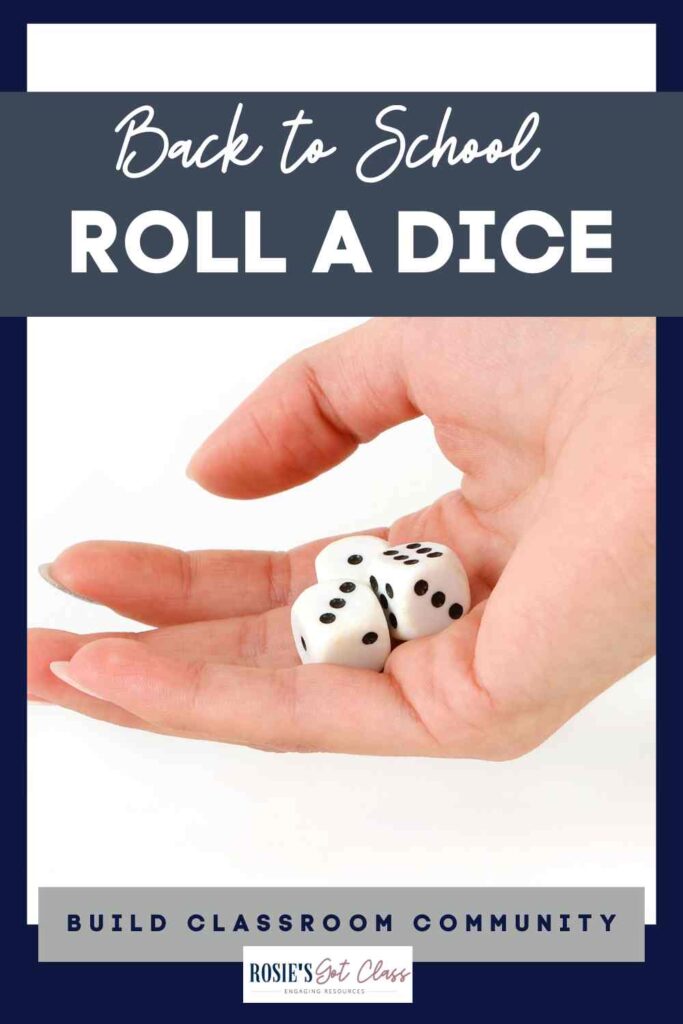
Roll a Dice Game
The “Roll a Dice” game uses a dice to give students the opportunity to share information about themselves. It is played with a partner or in a threesome if you have an odd number of students. Students will roll the dice and answer questions that are relevant to the beginning of the school year. Since this is a back to school math activity, I also use this as an opportunity to teach them how to roll the dice on a plate.
Do you know about this method to save your sanity? If you use a Chinet paper plate as the place for students to roll the dice, it will keep the dice contained and you won’t have to listen to the dice rolling across the desks of your students. Since it is a thick paper plate, it both absorbs the sound and confines the dice. I have had my set of plates for many years, and they have been used repeatedly. We also discuss how the plates are a tool and not a toy. Students will roll the dice and answer questions that help them set goals and share their thoughts about the upcoming school year.
How To Do It
The “Roll a Dice” game uses a dice to give students the opportunity to share information about themselves. It is played with a partner or in a threesome if you have an odd number of students. Students will roll the dice and answer questions that are relevant to the beginning of the school year. Since this is a back to school math activity, I also use this as an opportunity to teach them how to roll the dice on a plate.
Do you know about this method to save your sanity? If you use a Chinet paper plate as the place for students to roll the dice, it will keep the dice contained and you won’t have to listen to the dice rolling across the desks of your students. Since it is a thick paper plate, it both absorbs the sound and confines the dice. I have had my set of plates for many years, and they have been used repeatedly. We also discuss how the plates are a tool and not a toy. Students will roll the dice and answer questions that help them set goals and share their thoughts about the upcoming school year.
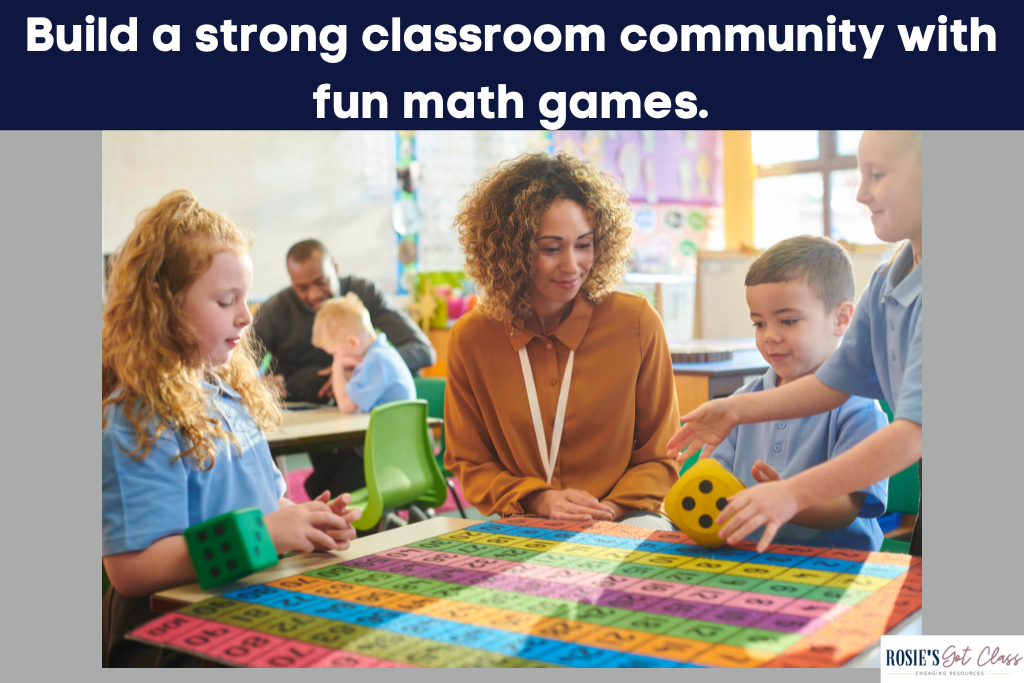
Incorporating these three back-to-school math activities—”Numbers About Me,” “Graphing Fun”, and the “Roll a Dice” game—into your classroom not only makes math fun but also helps build a strong classroom community from the very first day of school. These activities allow collaboration and sharing. By engaging students in these interactive activities, you can set the tone for a year of exciting math activities that foster curiosity and connection.
You might also enjoy these articles.


